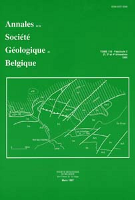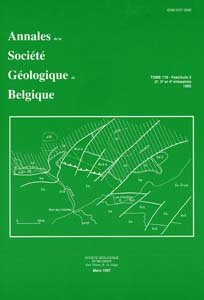- Accueil
- Volume 95 (1972)
- Fascicule 2
- Détection du filon de galène de la mine de Longvilly (Bastogne) par la géochimie de surface, distribution du plomb et du cuivre dans les sols et cartographie de leurs isoteneurs
Visualisation(s): 376 (8 ULiège)
Téléchargement(s): 591 (6 ULiège)
Détection du filon de galène de la mine de Longvilly (Bastogne) par la géochimie de surface, distribution du plomb et du cuivre dans les sols et cartographie de leurs isoteneurs

Abstract
A geochemical soil survey was made over a known galena ore body in the old mine of Longvilly (Bastogne). About 350 soil samples were collected in an area of 1.5 x 1.5 km2. The sample sites were 50 m apart near the vein and 100 m apart elsewhere.
The distribution of copper and lead was plotted on a geochemical map using the mobile average technique. A significant lead anomaly occurred above the galena vein which was located in a vertical fault. The copper content only showed a correlation with the outcropping Lower Devonian formations.
The distribution of copper concentration was lognormal for the 323 samples studied. This has been interpreted as a control by the law of mass action of the mechanism of copper distribution in soil. The background value for copper is 13 ppm and the threshold level is 29 ppm. The statistical distribution of lead in soils is complex. The lead content in soils ranges from 60 to 4,000 ppm.





